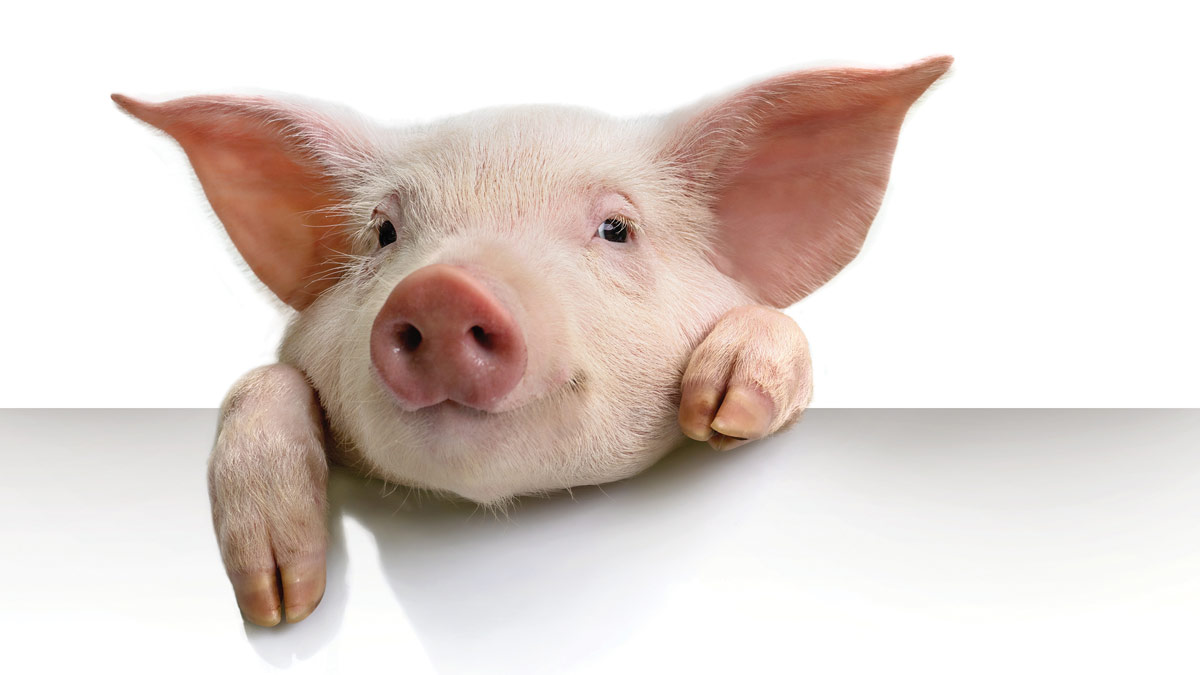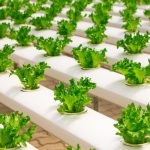Production of the world’s first genetically engineered food animal, a GE salmon, ended in 2024 after twenty years of protest in Canada. In 2012, the introduction of the GE “Enviropig” was stopped because of consumer and farmer opposition, but a new GE pig is on the horizon.
Thus far, the use of genetically engineered (GE or genetically modified) animals in Canada has been stopped by public protest and consumer rejection. However, the question of who determines the future of genetic engineering, and based on what considerations, is still wide open, as Health Canada is considering a gene-edited pig for human consumption.
GE salmon goes belly-up
After seven years, the production of genetically engineered Atlantic salmon by US-based biotechnology company AquaBounty ended in 2024. This was the first GE food animal on the market anywhere in the world, and people in Canada were the first to eat it. Despite the lack of labelling to help consumers choose, the market rejected GE salmon.
The Atlantic salmon was genetically engineered with genetic material from chinook salmon and ocean pout, with a claim to grow faster. It was first sold in Canada in 2017, produced in Panama. Starting in 2021, it was produced by AquaBounty at on-land “tank farms” in Prince Edward Island and Indiana in the United States.
All these fish farms are now sold and there is no GE salmon being produced anywhere. In March 2024, Cooke Aquaculture bought AquaBounty’s PEI facilities but said, “Cooke does not farm or sell any GE seafood products and has no plans to do so with this acquisition.”
Speaking about AquaBounty’s demise, Sharon Labchuk of the coalition GMO Free PEI said, “We’re glad to see the back of this company after over twenty years of our protests against genetically modified food.” Labchuk first protested the GE salmon in 2001 and continued to work with community groups who opposed the GE fish and the ongoing government funding for the company.
The GE salmon was produced on land but a major concern was the potential, however slim, of escape into the wild, especially as AquaBounty expanded production to new sites. Escape would have put endangered Atlantic salmon at risk of genetic contamination or competition from GE salmon.
“The development of GE salmon violates wild salmon and all the human and more-than-human communities that wild salmon support,” said Carl Wassilie, a Yup’ik biologist, co-founder of Salmonberry Tribal Associates and organizer with the Block Corporate Salmon campaign. “Wild salmon underpin our cultural, spiritual, emotional, and physical wellbeing as Indigenous Salmon Peoples. We need to build on this victory to ensure that no other company takes up the colonial project of genetically engineering salmon.”
The GE salmon was stopped, but this does not mean an end to GE animals.
This little piggy didn’t go to market
Back in 2011, the GE “Enviropig” was poised to be the first GE food animal in the world. It was developed at the University of Guelph in Ontario but, in 2012, as a result of farmer and consumer protest, the hog producers’ association Ontario Pork stopped funding the research and the university shut down their commercial pursuit.
The pig was genetically engineered with genetic material from a mouse to reduce the amount of phosphorus in the pig’s feces. Excess phosphorus is a pollution problem created by large factory farms, a problem that already has many solutions.
A large banner read “UofGE: Changing Pigs, Selling Life” which was a spoof of the University of Guelph’s slogan “Changing Lives, Improving Life.”
In February 2010, Environment Canada approved production of Enviropig™, but in March 2010, the National Farmers Union (NFU) Ontario passed a resolution opposing its use and asking that “these financial resources be redirected to research that fits the real needs of hog producers.”
Unlabelled GE meat threatened to trigger a consumer backlash. Sean McGivern of NFU Ontario and a hog and cattle producer, said, “This GE pig could ruin the trust Canadians have in our pork…. It’s down to the University of Guelph to cancel their request for approval. This is the only way to protect our markets.”
Public opposition culminated in February 2011 at a “Pig Rally” at the university. Protesters wore pig snouts and held signs saying, for example, “No GM Pork on My Fork.” A large banner read “UofGE: Changing Pigs, Selling Life” which was a spoof of the UofG’s slogan “Changing Lives, Improving Life.”
The “co-inventor” of Enviropig™, professor Cecil Forsberg, told the New York Times that, “I had the feeling in seven or eight or nine years that transgenic animals probably would be acceptable. But I was wrong. It’s time to stop the program until the rest of the world catches up.” In 2025, has the world “caught up?”
This next little GE piggy?
Because people in Canada have never been consulted about genetic engineering in our food system, important questions remain unasked and many voices unheard. At a 2024 event at the University of Alberta, Robin Wall Kimmerer, author of Braiding Sweetgrass: Indigenous Wisdom, Scientific Knowledge and the Teachings of Plants, was asked about genetic engineering and said, “These tools that fundamentally change the identity of the genetic sovereignty of our plant and animal relatives are ethically challenging.”
Despite the ongoing controversy and unresolved issues, Canadian regulators are now assessing the safety of another genetically engineered pig, engineered with the gene editing technique of CRISPR to be resistant to most strains of a costly pig virus. At the same time, the public demand for mandatory GE food labelling in Canada is heating up again. See www.cban.ca/labelling for updates and action.
Lucy Sharratt is Coordinator of the Canadian Biotechnology Action Network (CBAN), a project of the MakeWay Charitable Society.




